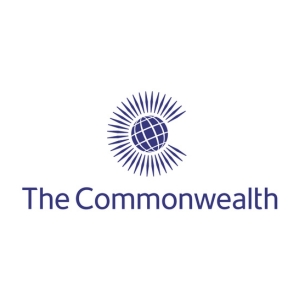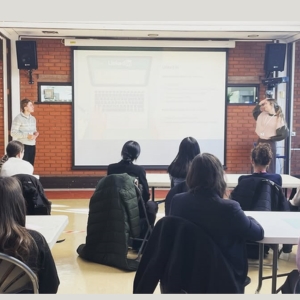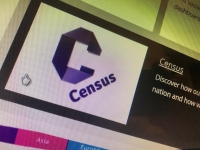Malikshaw Appointed as Approved Supplier to the Commonwealth Secretariat
Malikshaw Interim and Executive is pleased to announce its appointment as an approved supplier to the Commonwealth Secretariat, further strengthening the company’s presence in the international public sector and development space.
This approval recognises Malikshaw’s proven track record in delivering high-calibre interim and executive talent across government and public sector organisations, both in the UK and globally. As a supplier, Malikshaw will support the Secretariat’s work in promoting democracy, development and cooperation across its 56 member states.
“Becoming an approved supplier to the Commonwealth Secretariat is a proud milestone for us,” said Rob Shaw, CEO of Malikshaw Interim and Executive. “We look forward to contributing to their vital mission by connecting them with the leadership and expertise needed to deliver real-world impact.”
Malikshaw Appointed as Approved Supplier to the National Audit Office
Malikshaw Interim and Executive is proud to announce its appointment as an approved supplier to the National Audit Office (NAO), the UK's independent public spending watchdog.
This appointment reflects Malikshaw's expertise in providing high-impact interim and executive professionals who support complex governance, audit, finance and public accountability objectives. As an approved supplier, Malikshaw will help the NAO continue its mission to improve public services and ensure value for money across government.
"We're delighted to be supporting the NAO as an approved supplier," said Rob Shaw, CEO of Malikshaw Interim and Executive. "This partnership recognises our shared commitment to excellence, integrity and the delivery of outcomes that matter."
Community News: Proudly Supporting National Careers Week
Our team members, Phoebe and Jack, had a fantastic time running a LinkedIn workshop for Year 12 students focusing on networking, job searching, and personal branding. It was inspiring to see the students so engaged, thinking ahead about their futures, and keen to learn how to present their skills and experiences effectively.
A big thank you to Hitchin Girls' School for hosting us, and to all the brilliant students who brought great questions, ideas, and enthusiasm to the session!
AI in Recruitment: Balancing Efficiency with the Human Touch

It’s impossible to ignore how quickly artificial intelligence has found its way into the world of recruitment. From CV screening tools to automated interview scheduling and even candidate matching algorithms, AI has certainly brought a wave of efficiency to the process. But while these tools can help speed things up and reduce admin, there’s a growing question we all need to ask: how do we keep the human element alive?
At Malikshaw, we work with clients across the public and private sectors, and we’ve seen the impact of AI-led tools first-hand. In some central government departments, for example, automation is already being used to sift thousands of applications for project and transformation roles—cutting weeks off the hiring timeline. That’s powerful. But we’ve also heard concerns: are we missing out on great candidates who don’t fit the algorithm? Is there room for nuance in a system that favours keywords over context?
The pressure to deliver quickly—especially on high-profile transformation programmes—makes AI appealing. Interim recruitment in particular can benefit from tools that flag candidates with niche skills or experience almost instantly. But at what point does it become too transactional?
Take the NHS, where some trusts have piloted AI tools to streamline hiring for administrative and operational support roles. In theory, it’s a game-changer. But in practice, there have been reports of candidates slipping through the net due to overly rigid screening criteria. It highlights the need for balance: technology should support human judgement, not replace it.
That’s why at Malikshaw, we see AI as a co-pilot, not a substitute. We still believe there’s no replacement for speaking to a candidate, understanding their motivations, and seeing how they might fit into a client’s culture—particularly in the public sector, where soft skills and adaptability often matter just as much as experience. Recruitment, especially at a senior interim level, is still a people business.
So, how do we get it right? How do we harness the speed and scalability of AI without losing the intuition and empathy that good recruitment depends on?
We’d love to hear your thoughts. Have you had a positive experience with AI-led hiring tools? Have you seen them go too far? And if you're leading a transformation programme, how much do you trust automation in finding the right people for the job?
Let’s keep the conversation going.
The Talent Equation

It's becoming increasingly clear that attracting and retaining the right talent in the public sector is no easy task. Speak to anyone involved in delivering large-scale transformation programmes—whether it's modernising digital services in central government, implementing major infrastructure upgrades, or reforming frontline services—and you'll hear the same thing: finding the people to lead and deliver change is harder than it's ever been.
Part of the challenge is that the workforce is shifting. Many long-serving public servants are nearing retirement, taking with them a huge amount of institutional knowledge. At the same time, the skills needed today—particularly in areas like digital transformation, data, procurement, and programme delivery—are evolving rapidly. The private sector often moves faster, pays more, and offers greater flexibility, and that's a tough act to follow.
This has real consequences. Transformation programmes stall because they can't find the right delivery leads or technical experts in time. Hiring cycles stretch into months. Teams are stretched thin, and momentum is lost. But while these challenges are well-known, they aren't insurmountable—and we're seeing organisations respond in smart, forward-thinking ways.
One of the most effective approaches has been embracing a more blended workforce model. Rather than seeing the use of contractors, interims, and temporary staff as a last resort, many public sector bodies are recognising the real value they bring—especially during periods of rapid change. The right interim specialist can hit the ground running, plug a critical skills gap, and bring fresh insight from other programmes across government and beyond. For many large-scale initiatives, this flexible expertise has become a cornerstone of delivery success.
At the same time, some organisations are investing in longer-term talent strategies. That means forming partnerships with universities, making better use of apprenticeships, and creating more flexible career paths that appeal to people at different life and career stages. It's about planning for future capability, not just reacting to current vacancies.
The truth is, we can't afford to stick with outdated recruitment models. If public sector organisations want to deliver real transformation, they need to think differently about how they find, attract, and keep the right people. At Malikshaw, we work side-by-side with public sector leaders to help shape and support that change—bringing in the interim expertise to keep programmes moving today, while helping to build the sustainable talent strategies that will power tomorrow.
Hiring on a Tight Budget: Cost-Savvy, Talent-Smart

It’s no secret that public sector organisations are feeling the squeeze. With tightening budgets and increased scrutiny over spending, leaders are under pressure to do more with less, especially when it comes to recruitment. But while finances may be limited, the expectations haven’t shifted. Services still need to be delivered, projects still need to be completed, and the people delivering them still need to be exceptional. So how do you maintain quality hiring when the purse strings are pulled tight?
It’s a familiar story for many: salary caps make it difficult to compete with the private sector, training budgets have been scaled back, and many teams are already stretched. This makes attracting the right people a real challenge. It’s not that the talent isn’t out there. It’s that the incentives to join, and stay, in public sector roles often pale in comparison to private sector opportunities. We’ve seen this play out across the country, from local councils to central government departments. Take the recent reports of social care vacancies in Birmingham, or the IT skill shortages within the NHS. Both show how difficult it can be to recruit when budget constraints limit what you can offer.
These pressures often lead to a heavier reliance on short-term contracts, consultancy support, or interim roles. While this can be a smart way to plug immediate gaps, it can also feel like a never-ending cycle. Organisations bring people in temporarily, only to lose them to higher-paying roles elsewhere once they’ve proven their worth.
So what can be done? Quite a lot, actually. One increasingly popular approach is to make strategic use of interim professionals. Not only can this be more cost-effective than long-term hires, but it also allows organisations to bring in highly specialised skills exactly when and where they’re needed. Interim specialists often hit the ground running, and with clear scopes of work, they can make a real impact without the long onboarding processes or permanent costs.
Beyond that, there’s the wider employment offer to think about. Many candidates, especially in today’s market, aren’t just chasing the highest salary. Flexibility, meaningful work, and a sense of purpose count for a lot. The public sector can often offer these in abundance. Whether it’s delivering on net-zero targets, improving transport infrastructure, or shaping digital services, the opportunity to make a tangible difference in people’s lives is a huge draw. It just needs to be communicated clearly and confidently.
Career development is another big lever. In a world where professional growth is often as important as the pay packet, showing people how they can learn, progress, and expand their skills within your organisation can be a major advantage. Structured development plans, mentoring, and cross-functional project work all add up to a more appealing proposition, even if the pay isn’t top of market.
The reality is that smart hiring doesn’t have to mean high-cost hiring. With a bit of creativity and a clear focus on what truly motivates professionals, it’s entirely possible to attract and retain the right people, even when budgets are tight. At Malikshaw, we work with public sector leaders every day to find those solutions, helping organisations build high-performing teams while keeping a close eye on cost.
Beyond Hiring: The Consulting-led Approach

Too many organisations approach resourcing like a box-ticking exercise. There’s a project to deliver, so they hire the people they think they need, often based on a job description that hasn’t changed in years. On paper, everything looks fine. In reality, the gaps appear quickly. The team doesn’t have the right mix of experience, roles overlap or leave blind spots, and instead of driving the project forward, businesses find themselves working around the limitations of their own workforce.
Transformation projects suffer the most from this. Unlike business-as-usual hiring, where roles and responsibilities stay relatively stable, transformation demands a more dynamic approach. The skills needed at the start of an initiative won’t be the same as those required later on. But traditional resourcing models don’t account for this. They’re built on fixed contracts and rigid structures that fail to reflect the real demands of change. That’s why so many transformation projects stall—not because the organisation lacked talent, but because they brought in the wrong expertise at the wrong time.
A consulting-led approach flips this entirely. Instead of starting with a job title and working backwards, it begins with a clear understanding of the business challenge. What’s the outcome the organisation needs to achieve? What skills and expertise will make that happen? Rather than defaulting to permanent hires or generic contractor roles, the focus shifts to building a talent strategy that aligns with the actual requirements of the transformation. The result is a model that prioritises outcomes over headcount, delivering talent that’s not just capable but truly fit for purpose.
Insight is at the heart of this. A consulting-led approach doesn’t rely on assumptions about what a business needs. It engages directly with leadership teams to diagnose the challenges before shaping a resourcing solution. That might mean a mix of high-level strategic expertise at the start of a programme, followed by hands-on specialists during implementation. It could involve a more flexible team structure that scales up and down in response to project demands. The key is agility—being able to adjust the resourcing model in real time, rather than locking in decisions that no longer make sense six months down the line.
Efficiency plays a major role too. Businesses waste significant resources on poorly structured resourcing. Too many projects are staffed inefficiently, with organisations either overcommitting on long-term hires or scrambling for last-minute fixes when gaps emerge. A consulting-led model avoids this by mapping talent needs to project phases, ensuring businesses only bring in expertise when it’s needed, for as long as it’s needed. The result is leaner, more effective teams, with every role delivering real value.
Transitioning to this approach requires a shift in mindset. It means moving away from recruitment as a transactional process and towards resourcing as a strategic function. The organisations that get this right don’t just complete projects more effectively—they set themselves up for long-term success, building a model that can adapt to future challenges rather than constantly playing catch-up.
At Malikshaw, we’ve helped businesses make this shift, providing insight-driven resourcing strategies that transform the way they access and deploy talent. If your organisation is facing a major change initiative, it’s worth considering whether your current approach to resourcing is fit for purpose. If not, maybe it’s time for a conversation about what better could look like.
















